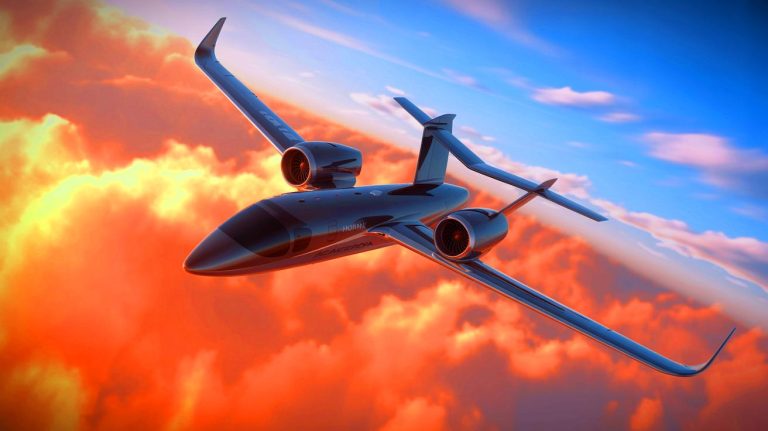| IN A NUTSHELL |
|
In a groundbreaking advancement for the aviation industry, Horizon Aircraft has achieved a significant milestone with its innovative electric Vertical Takeoff and Landing (eVTOL) prototype, the Cavorite X7. This Canadian company has successfully demonstrated full wing-borne flight transition, marking a pivotal moment in the evolution of urban air mobility. Capable of cruising at speeds up to 250 mph and covering distances over 500 miles, the Cavorite X7 is poised to revolutionize the way we think about transportation. With its ability to carry six passengers and a pilot, this aircraft blends traditional aviation capabilities with the dynamic potential of eVTOL technology.
The Ingenious Hidden Lift Fan System
At the heart of Horizon Aircraft’s Cavorite X7 lies a patented hidden lift fan system that is crucial for its vertical takeoff and landing capabilities. This sophisticated mechanism allows the wing surfaces to slide open, revealing the battery-powered lift fans during vertical flight. As the aircraft transitions to forward motion, the wing surfaces close, transforming it into a standard fixed-wing aircraft powered by a gas turbine engine and a rear push-propeller.
This innovative fan-in-wing system is a testament to Horizon Aircraft’s commitment to using modern electric motors and batteries to power a next-generation eVTOL platform. This emphasis on simplicity, safety, and efficiency is expected to position the Cavorite X7 as a leader in the fast-growing Regional Air Mobility (RAM) market. As the aviation world eagerly awaits the full-scale, piloted technical demonstrator currently under construction, the Cavorite X7 is set to be a game-changer.
All-Weather Capabilities and Certification Goals
Named after the fictional anti-gravity material from H.G. Wells’ “The First Men in the Moon,” the Cavorite X7 is engineered to operate in diverse weather conditions. With a maximum gross weight of 5,500 lbs, it can transport up to 1,500 lbs of cargo for vertical takeoffs. When using a traditional runway, this capacity increases to 1,800 lbs.
The X7 is designed as a true hybrid aircraft, aiming to achieve certification for both Instrument Flight Rules (IFR) and Visual Flight Rules (VFR). This dual capability ensures that it can operate safely under various weather conditions, potentially making it the first aircraft of its kind to achieve such a rating. Chief Engineer Brian Robinson emphasizes that the latest milestone validates the effectiveness of their unique approach to managing the crucial transition phase of flight.
| Feature | Details |
|---|---|
| Passenger Capacity | 6 passengers + 1 pilot |
| Cruising Speed | Up to 250 mph |
| Range | Over 500 miles |
| Maximum Cargo | 1,500 lbs (vertical), 1,800 lbs (runway) |
A Vision for Safe and Efficient Air Mobility
Horizon Aircraft’s CEO, Brandon Robinson, underscores the company’s focus on innovations that align with operational realities and leverage the best available technology. The Cavorite X7’s transition phase is engineered to be seamless, avoiding the complexities faced by other eVTOL designs that rely on multi-copter rotating nacelles or heavy tilt-wing mechanisms. This design philosophy results in an extremely safe and stable transition, a critical component of eVTOL operations where many competitors have struggled.
The emphasis on safety and efficiency is further enhanced by multiple layers of redundancy, ensuring a robust operational framework. As the Cavorite X7 progresses towards full-scale demonstration, it represents a significant step forward in the quest for reliable and accessible urban air mobility solutions.
As Horizon Aircraft continues to advance its groundbreaking work with the Cavorite X7, the aviation community and potential passengers alike are left to ponder the future of air travel. How will these innovations shape the landscape of urban mobility, and what new possibilities will they unlock for generations to come?
Did you like it? 4.7/5 (23)









Wow, this is like something out of a sci-fi movie! 🚀
How does the Cavorite X7 compare to other eVTOL aircraft in terms of efficiency?
Great job, Horizon Aircraft! Can’t wait to see this in the skies! 👏
Is the hidden lift fan system reliable in extreme weather conditions?
Do you think this technology will become mainstream in the next decade?
Why is it named after an H.G. Wells’ concept? Seems a bit random. 🤔
Where can I sign up for a test flight? 😄
What does the transition phase feel like for passengers? Smooth or bumpy?
Finally, a flying car that doesn’t look like a helicopter! 🛩️
How long until we can see commercial versions of this eVTOL?
I’m curious about the noise levels during takeoff and landing.